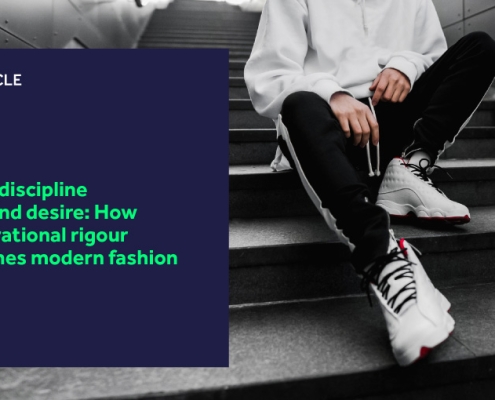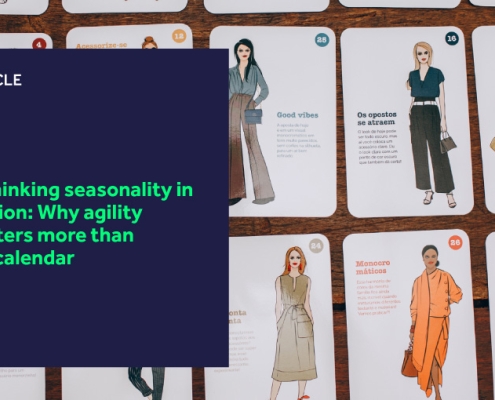ASOS’ recent turmoil exposes a fascinating contradiction in fashion retail strategy that turns conventional wisdom on its head.
While brands like Nike have stumbled by abandoning their core customers for broader markets, ASOS is crumbling for doing precisely the opposite.
By doubling down on its core fast-fashion demographic, ASOS has watched its stock price plummet to a 17-year low, shedding almost 50% in just six months.
It’s tempting to dismiss this as just another fast fashion casualty, but that misses the crucial distinction at play.
This isn’t simply about the decline of disposable fashion; it reveals the fundamentally different strategic imperatives that platform retailers face compared to branded manufacturers.
The platform-brand divergence
The fundamental difference lies in what these businesses actually are. Nike, Adidas and other legacy brands we’ve discussed before are product creators and manufacturers first.
Their primary value proposition is the product itself, while ASOS is predominantly a curation and distribution platform that happens to have its own label.
This distinction is key to understanding ASOS’ decline.
For a brand like Nike, staying true to core customers (runners, athletes) makes perfect sense. Its expertise, heritage and brand equity are built around specific product categories.
When Nike diluted this focus, it undermined its core value proposition, evidenced by its declining running shoe market share against focused competitors like Hoka and On.
For a platform like ASOS, focusing exclusively on a single customer segment creates inherent vulnerability.
Its primary value isn’t the product but the shopping experience, curation and lifecycle journey they provide to customers. When these customers evolve, as all fashion consumers inevitably do, the platform must evolve with them.
The Boohoo contrast: Customer Lifecycle Management
This brings us to what Boohoo did right in contrast to ASOS’ missteps.
As The Good Factory’s Samantha Taylor pointed out, Boohoo recognised a fundamental truth about fast-fashion consumers: They grow up and evolve into mid-market shoppers.
By acquiring Debenhams, a brand its original customers wouldn’t have considered in the past, Boohoo created a natural progression path for its maturing customer base. Boohoo didn’t just diversify its portfolio; it future-proofed customer relationships.
ASOS, on the other hand, acquired brands that essentially mirrored its existing offering. It didn’t expand its customer demographic; instead, it simply reinforced its existing position with the same audience it had already built.
This created a dangerous dependency on a single market segment.
When ultra-low-cost competitors like Shein and Temu entered the market with even cheaper alternatives targeting this exact demographic, ASOS had nowhere to pivot. The entire business was tethered to one customer segment, with no secondary customer base to cushion the blow.
The data paradox: Information without direction
Perhaps the biggest irony in this story is that ASOS, an online-first retailer, had accumulated customer data for years. This data could have revealed how its customer base was evolving and informed strategies to retain them through different life stages.
Instead, ASOS failed to leverage this wealth of information, doubling down on serving the same demographic segment even as those very customers began to look elsewhere, whether to cheaper alternatives or mid-market options.
This approach stands in stark contrast to what we’ve seen from fashion retailers like AllSaints.
While maintaining its core brand identity, AllSaints strategically expanded both its distribution channels and product categories (including accessories and fragrances), allowing it to retain customers through different life stages while staying true to its aesthetic.
What all this crucially highlights is that there is no silver bullet. What works for AllSaints doesn’t necessarily work for ASOS or Nike. Brands that are winning today successfully leverage customer insights to ensure their offerings reflect what customers actually want, not just now but as they evolve.
The diversification imperative for platforms
For fashion platforms, diversification isn’t just about adding revenue streams – it’s about creating customer journey pathways. When your business model is primarily curation and distribution rather than manufacturing, your strategic priorities must reflect this reality.
Successful platform retailers understand that they need to build ecosystems that accommodate customers at different life stages, price points, and style preferences.
It’s about creating a brand portfolio that allows customers to stay within your ecosystem even as their tastes and budgets evolve.
Mytheresa’s planned acquisition of Net-a-Porter illustrates this strategy in the luxury segment. By bringing Net-a-Porter, MR PORTER, The Outnet and YOOX under its umbrella, Mytheresa isn’t simply expanding – it’s strategically reinforcing its market position with complementary offerings.
This move creates a global, multi-brand digital luxury group with broader customer reach and more comprehensive luxury offerings. The strategic benefits are tangible: reduced customer acquisition costs, fewer brand defections, and eliminating redundant product offerings – all critical challenges that have plagued online luxury retailers for years.
As Mytheresa’s chief executive, Michael Kliger, explained to The Business of Fashion:
“The vision is clear: clearly differentiated brand identities based on different assortments, different marketing, different customer touch points. There is so much room in luxury to fulfil these positions and attract different customers.”
While luxury retail offers this flexibility, fast fashion presents fewer opportunities for meaningful differentiation, given that it’s largely driven by price competition.
Nevertheless, both Boohoo in the fast fashion space and Mytheresa in the luxury market have shown that strategic diversification is essential in saturated markets.
The companies that thrive don’t just add more options; they create cohesive ecosystems where customers can evolve while remaining loyal to the parent platform.
Where does ASOS go from here?
The broader lesson for fashion retailers, particularly online-first players, is clear: Diversification isn’t just about spreading risk; it’s about lifecycle customer management.
The ability to evolve with your customers, providing them with relevant options at each stage of their shopping journey, separates thriving platforms from stagnating ones.
This isn’t to say that ASOS’ situation is irreversible. With the right strategic pivot, it could potentially rebuild by diversifying its portfolio to create natural progression paths for its aging customers. However, this would require fundamentally rethinking its customer retention and acquisition approach.
In the end, the platform paradox reveals an unnerving truth. Staying too close to your core customers can be just as dangerous as straying too far from them.
The key lies in understanding the unique strategic imperatives that your business model demands, whether you’re a brand manufacturer like Nike or a retail platform like ASOS.
Those who consider not just who their customers are today, but who they’ll become tomorrow, and build the ecosystem to serve them on that journey, will be the ultimate winners.
Enjoyed reading our analysis on why brands need to stay in touch with their consumers? Check out our analysis on how luxury brands can balance needs across different generations.
 https://k3fashionsolutions.com/wp-content/uploads/2025/10/discipline-behind-desire-featured.jpg
510
900
Jordan Heal
https://k3fashionsolutions.com/wp-content/uploads/2024/12/K3_Fashion_Solutions_Half-color_RGB.svg
Jordan Heal2025-10-14 15:17:472025-10-14 15:17:47The discipline behind desire: How operational rigour defines modern fashion
https://k3fashionsolutions.com/wp-content/uploads/2025/10/discipline-behind-desire-featured.jpg
510
900
Jordan Heal
https://k3fashionsolutions.com/wp-content/uploads/2024/12/K3_Fashion_Solutions_Half-color_RGB.svg
Jordan Heal2025-10-14 15:17:472025-10-14 15:17:47The discipline behind desire: How operational rigour defines modern fashion


